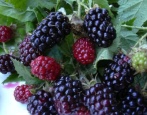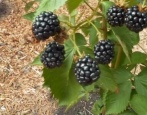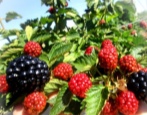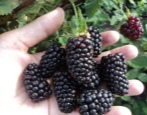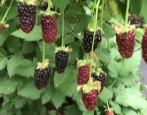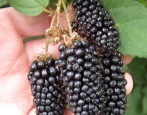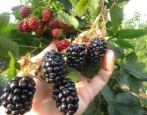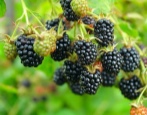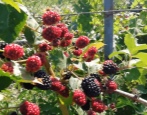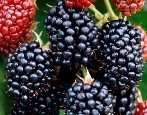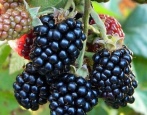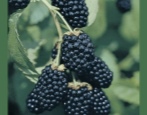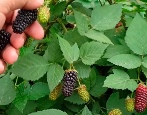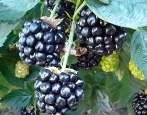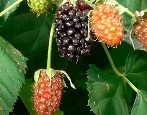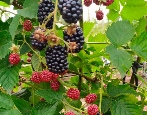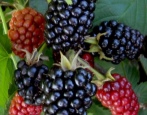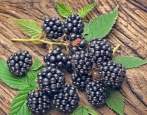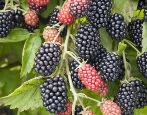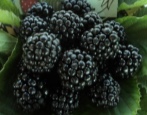
- Authors: France
- Taste: sweet with a little sourness
- Scent : blackberry
- The presence of thorns: No
- Berry weight, g: 12-15 and more
- Berry size: very large
- Berry color: black
- Fruiting period: from the second week of August during the month
- Yield: up to 25-30 kg per bush
- Drop off location: away from cold drafts
In addition to the usual berries, everyone would like to grow something atypical, beautiful at least once. Blackberries are just that type of berries that are tasty and ripen beautifully. The article will discuss the features of the Jumbo blackberry variety.
Breeding history of the variety
Blackberries as a species came to Europe from America and for a long time grew as a wild-growing crop, but French breeders could not pass by the berries and decided to transform them. Blackberry Jumbo is a hybrid that was bred in France in the Marionette nursery in 2007. The parental pair was based on wild varieties.
Description of the variety
The bushes grow compactly, the vines do not spread in different directions, they can reach a height of 1.5-2 m. The branches are erect, without thorns. But over time, under the weight of the fruits, they begin to slowly lean towards the ground. It is important to think over the trellis system.
In one season, the bush gives off shoots from 2 to 4 pieces, their height is no more than 50 cm.
The leaves are dark green in color, closer to an oval shape, the size is medium, there are veins on the entire surface of the foliage, and characteristic jags along the edges.
The disadvantages include the fact that this culture does not tolerate dampness and cold at all. She also has a long acclimatization to the landing site. Young seedlings can keep new shoots out for a long time and not grow.
Ripening terms
Blackberry Jumbo is a mid-season variety. In the southern regions of the country, it begins to ripen in the second week of July. In the central part - at the beginning of August, but in the northern parts of the country - towards the end of August.
Since the vegetation period is quite long, on the bush you can see both the berries that have gained color and the flowers that have not yet begun to bloom.
Yield
In the first year, you should not wait for the harvest from the seedlings, since the branches are just taking root and take root in new places, but next year the yield will not be long in coming. Fruiting takes up to 6-8 weeks, and 25-30 kg of fruits are collected from one bush.
Berries and their taste
Blackberries are very similar to raspberries in their fruits, therefore, unknowingly, many confuse blackberries with black raspberries. But this is a bit different. Blackberries, in particular Jumbo varieties, are very sweet, they do not contain bitterness or sourness. The pulp is juicy, elastic. Drupes are practically not felt. The skin is tender but does not burst. The fruits are not crumpled during picking, as well as during transportation. Shelf life out of cold is 1-2 weeks. They tolerate freezing well without losing their qualities.
The color of the berries is black, with a slight gloss. The weight of the first berries reaches 30 g, the subsequent berries can weigh an average of 15 g.
Growing features
It is worth planting blackberries in the spring or autumn season. The selected area should be located on a hill, since blackberries are not a plant that loves excess moisture. The place should be well lit by the sun, without shade and drafts.
It is worth remembering that seedlings aged 1.5-2 years take root best of all. The seedling should have 1-2 stems, also a basal bud. Accordingly, the roots should already develop well, and the roots should be 20-30 cm long.
It is worth remembering that blackberries do not get along well with raspberries. Therefore, it is worth planting them in different parts of the garden.
Site selection and soil preparation
Before planting seedlings, the selected place must be dug up with fertilizers and useful minerals. The soil should be saturated with minerals for two weeks, during which time the soil will rest and be able to accept seedlings.
Before planting blackberries, it is necessary to think over a system of trellises or other fastenings, since the branches grow quickly, it will be necessary to tie them up immediately.
The planting scheme should be as follows: holes are dug to a depth of 0.5 to 0.8 m, with a diameter of 0.5 m. land. Then the bushes are spilled with water. There should be 0.7-1 m between seedlings, between rows - from 1.5 to 2 m.
Pruning
Pruning blackberry shoots should be done twice a season. The first pruning will be in early spring. After the covering cover is removed, all frozen branches or those that have broken from snow are cut off at the root. The remaining vines are hung on trellises.
After harvesting and before the first frost, blackberry branches are cut as follows: first, all vines that have been bearing fruit for more than 3 years are cut off. The next ones are those affected by pests. 5-7 powerful vines are left in the bush, which are cut by 25 cm, and the cut is covered with garden pitch so that pests cannot get there.
Watering and feeding
Blackberry Jumbo tolerates drought favorably, but it should not be abused. Therefore, it is necessary to water 1-2 times every 2 weeks. If it is rainy season, then additional watering is not required. Excessive moisture is very detrimental to the root system.
In the spring, you need to feed the bushes with organic fertilizing. It can be manure mixed with urea. In the summer, a complex is made of minerals that contain fluorine, phosphorus and potassium.
Frost resistance and preparation for winter
Frost resistance in this culture is very low, therefore it is necessary to additionally cover the plant. The vine is carefully removed from the reinforcement, folded and placed on the boards, from above it can be covered with spruce branches, covering material or agrofibre.
Diseases and pests
Blackberry varieties have many different diseases, but the Jumbo variety is particularly resistant. The enemies of the Jumbo blackberry are insects such as beetle, raspberry beetle, blackberry and spider mites, and raspberry stem fly.
Reproduction
Jumbo blackberries can be propagated in the following ways.
Cutting method, one of the most common. In autumn, cuttings from 25-40 cm long are harvested. Cuttings are buried in the ground and covered. In the spring, they need to be dug up, the sections on both sides should be updated and planted in a container, covered with a film to create a greenhouse effect. After a few weeks, young shoots will appear.
Rooted method of propagation of shoots. New shoots should not be immediately separated from the bush. The selected shoot should be tilted to the ground and dug in, securing it in 2-4 places. Dig a trench no more than 20 cm. This breeding method is carried out in August. After 30-50 days, it all depends on the region, the young shoot will take root. The resulting seedling must be transplanted strictly next spring so that the seedling does not experience stress.
